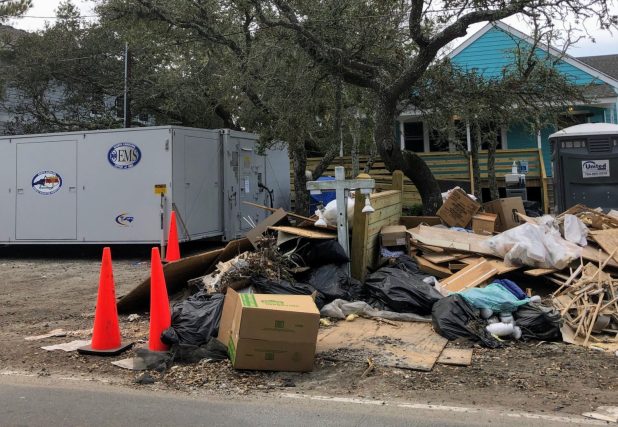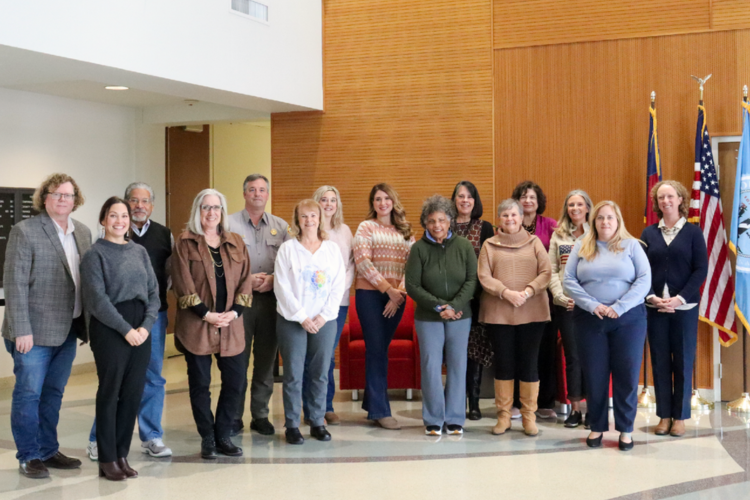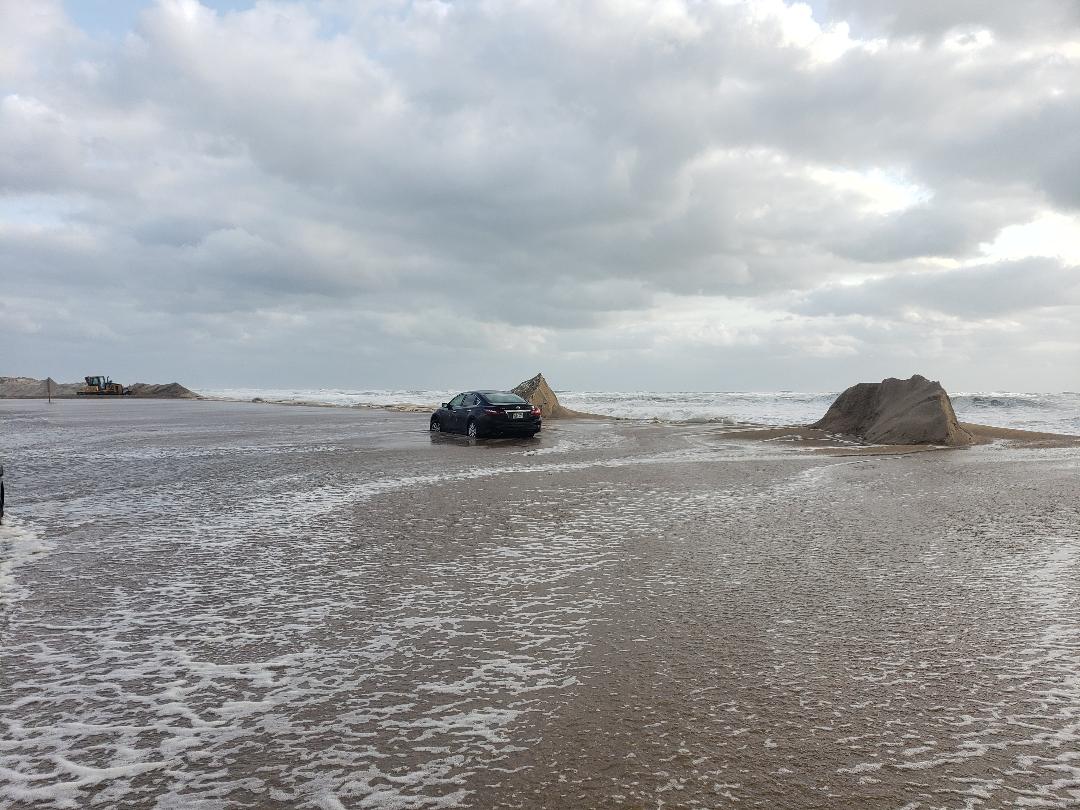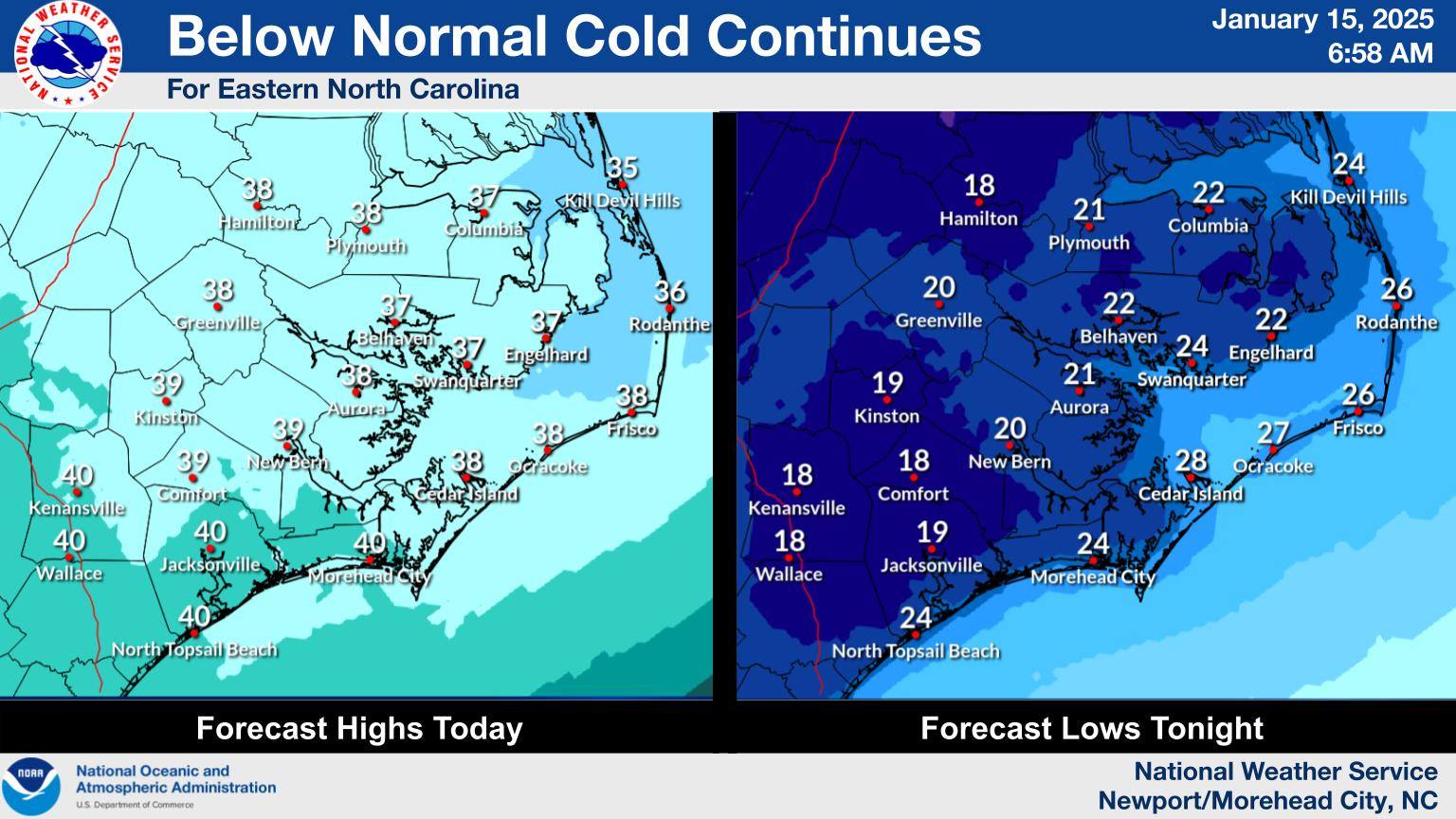Ocracoke & Hatteras locals pull together to continue health care delivery post-flood
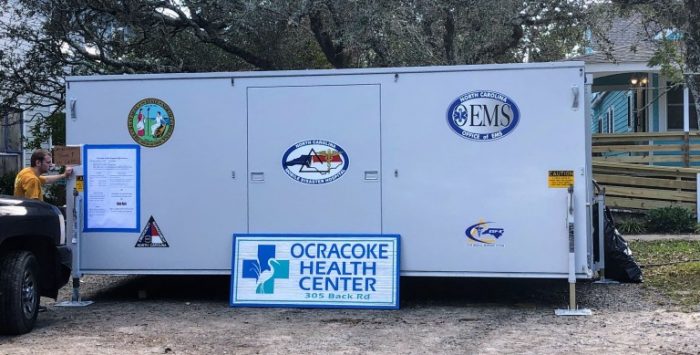
Editor’s note: Our colleague, Rose Hoban, founder and editor of North Carolina Health News, is keeping tabs on the island’s health and recovery from Hurricane Dorian.
After floodwaters inundated Ocracoke, neighbors and local responders pulled together to get health care services back up and functioning on the island.
By Rose Hoban
When Hurricane Dorian’s winds pushed the Pamlico Sound onto Ocracoke on the morning of Friday, Sept. 6, Erin Baker, the physician at the Ocracoke Health Center, was in her house with her elementary-school aged daughter.
“My house was lifted after a storm in ’04,” she said. “It’s lifted 6 feet, I had 5 feet of water, it was a foot from my underpinning. I had three trees on the house, with roof damage … I need a new roof, but I’m OK.”
Baker is one of the fortunate ones. Hundreds of others of the island residents had as much as 4 or 5 feet of water in their homes. Even in houses high enough to avoid the water, often the heating and electrical systems in their crawl spaces were totaled. Along with almost everyone’s cars.
That’s what happened to the Ocracoke Health Center too.
“The water apparently came up through the floor. It didn’t flow through the front door and out the back, it came up through the flooring,” said Cheryl Ballance, the director of the center. They had just put down new waterproof vinyl floor covering. “I think that helped to keep some of it from climbing into the building, going too far up the wall. But it also trapped some water there.”
The clinic’s heating and ventilation system was ruined, along with the electrical system, insulation and all of the data lines. Ballance said their pre-storm routine is to take portable equipment, put it on top of the desks and tables, and cover it in plastic.
“Everybody was like, ‘Do you think we really have to do that?’” she recalled. “If we do come back, and we don’t have something to work out of, we at least have something to work with.”
Some equipment was lost, but most of the portable items were saved. And for the foreseeable future, the health center doesn’t have their usual place to work out of, but they do have things to work with.
Roughing it
“You have an AC unit blowing all the time, you have that background. You also have this air filtration system that sounds like you’re on an airplane,” Baker said about a mobile facility loaned to the health center by the state Department of Public Safety. The unit, part of the state’s mobile disaster hospital, has three little emergency room-type bays with gurneys and portable dividers.
“In terms of privacy in patient care… we can use the dividers and then make people wait outside if it’s something that people need to undress (for) or they need a more private area,” she said.
Also outside are a portable-toilet and the hand-washing station.
After the storm, Ballance got back to Ocracoke and was able to retrieve the organization’s server, which was high and dry. She got that up and running, so now the staff have access to patient records.
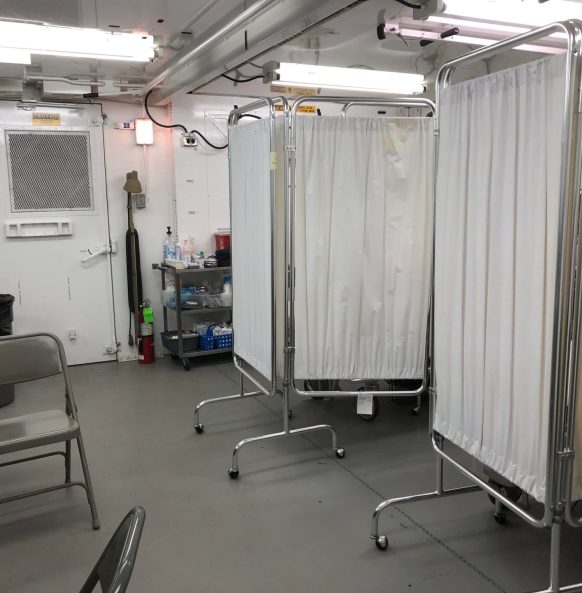
The clinic was also fortunate to get power back quickly from the local electrical cooperative. So they have power, but no backup generator. As for telephonic communication, they’ve gone old school.
“My dad used to be a telephone repairman,” Baker said, laughing. “I still have one of his Bell Atlantic phones. When my daughter turned nine, she said, ‘I want a cell phone like all my friends,’ and I said, ‘I’ll get you a phone,’ so gave her that phone and I gave her a landline.
“The clinic is borrowing that landline until we can get our lines up.”
Shock, anxiety, grief
Within hours of the flood, emergency responders descended on the island. Among them were mental health counselors sent by Trillium, the local mental health management entity that serves the area.
Khristine Brewington from Trillium was among a half dozen licensed clinicians, including a psychiatrist, who arrived on Monday, and stayed for the week.
The group initially set up at the fire station but moved operations to the Ocracoke Life Saving Church that had survived the floodwaters.
“Our main goal was to triage the behavioral health needs of the community,” Brewington said. “When we first arrived on the island … the initial response was the shock and residents wanting to clean their houses and the restaurants and businesses.
“As the week progressed, we did see the [facial] affect of the residents change, where there was anxiety and frustration that certain needs needed to be addressed.”
She said debris removal and the refuse stacked up along the roads, along with the lack of electricity for many residents, added to people’s stress.
“A lot of these residents not only lost their possessions, they lost their pets and they lost their way of employment,” she said. “The shock wore off and then it’s a grieving process.”
She also said there’s a lot of anxiety over lost income. Even in good years, many Ocracoke residents are part-timers who work two and three jobs during the tourist season. That season abruptly ended when the floodwaters arrived, shaving as much as two months’ wages off people’s annual incomes.
Money worries have only grown since Dorian’s visit, exacerbated now with a recent FEMA refusal of individual assistance to affected people on the coast.
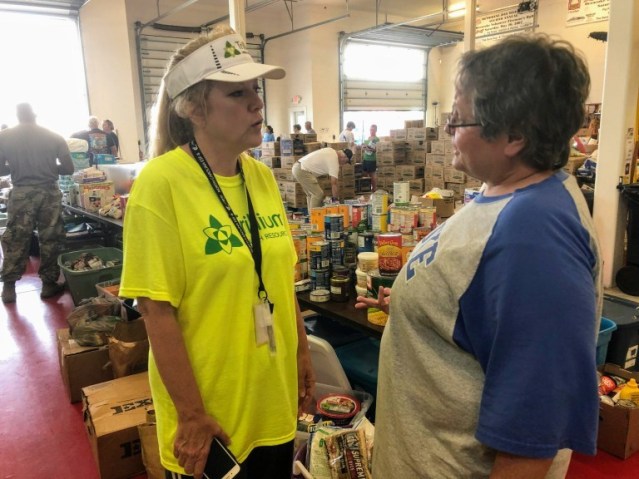
In that first week, the therapists had more than 450 encounters with islanders. They also walked the roads in the village to meet folks who were cleaning out their houses.
“We [were] talking, assessing, speaking with the residents, ‘How can we help?’” she said. They also provided an ear to first responders, who often bore the brunt of frustration from people who had lost everything.
Then Trillium staff handed off their work to local providers with whom they coordinated. By the end of September, counselors had about 1,600 total in-person encounters, for a population of about 1,000.
Resilience
Brewington noted that getting medications on and off the island was another challenge, between irregular ferries and problems with the postal service.
“Some of the medications were washed away in the flood,” she explained.
On Hatteras Island, Steve Evans, the co-owner of Beach Pharmacy in Hatteras village, was busy cleaning up after getting 10 inches of water in his store and 18 inches in the house he owns in town.
Evans opened the Hatteras village location in 1991, and he sends medications to Ocracoke daily on the ferry. This was the fourth storm he’s lived and worked through, so he knew the drill. He’d also prepped by moving everything in his shop off of the floor. Even so, the warm temperatures and increased humidity spoiled some medications, and there was wallboard and debris to remove from both the store and the house.
“You’ve got heat and humidity and the stink, and that gets into the Sheetrock and the air conditioning,” he said. “Ask anyone who’s had a flood. They’ll tell you about the smell, if you can’t get in there quick enough.”
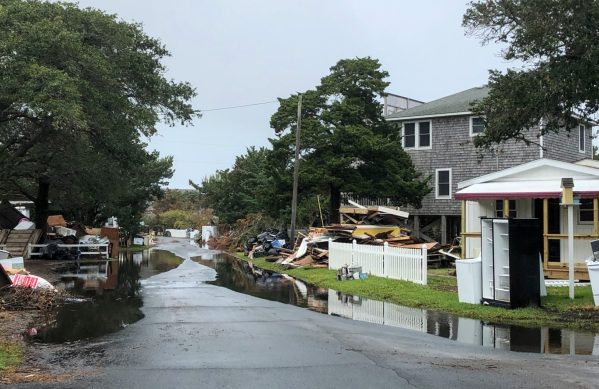
Nonetheless, Evans and his co-worker Morghan Stallings quickly got back to work. They put their cell numbers out into the community, where the information spread by word of mouth. By Monday afternoon, they had prescription replacements and refills on the Hatteras to Silver Lake ferry.
“It’s a matter of priority,” he said. “People have to have their medications. You’re messing with their livelihood.”
He said the locals’ resilience, gratitude and graciousness is part of the reason he goes the extra mile to make the business work there.
That resilience – and a sense of humor – was evident in how Erin Baker decided to frame the situation.
“Within the first hour of working within that unit I decided to just imagine that I’m working on another planet … until we can go back home,” she said. “We’ll just make this the clinic and do our best to make this comforting and familiar to people, because that’s something that people need right now.
“It’s my weird little delusion that’s maintaining my sanity.”
